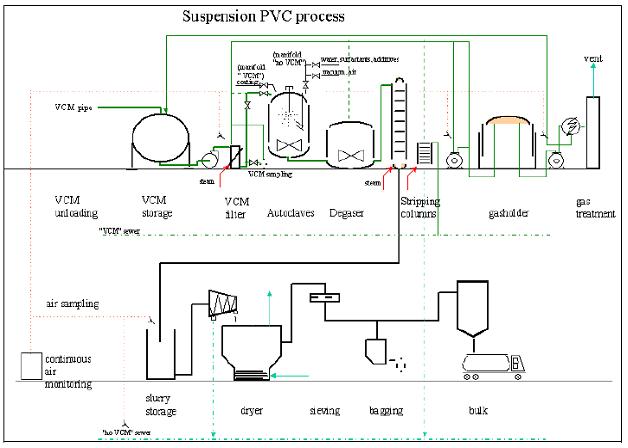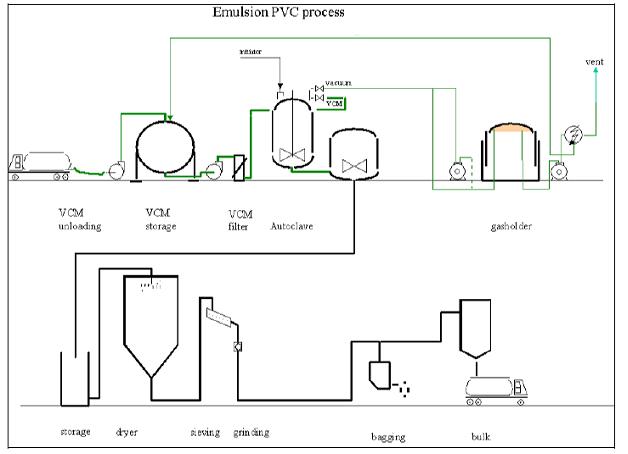Polyvinyl chloride
Back to Information about polyvinyl chloride
1 General description
PVC, polyvinyl chloride, is one of the three highest volume polymers, slightly behind polyethylene and polypropylene. It is used in most industrial sectors (e.g. packaging, automotive, building, agriculture, medical care). The typical intrinsic properties of PVC are:
- strength/stiffness per unit cost when unplasticised
- lightness
- impermeability
- chemical and biological inertness
- ease of maintenance
- durability
- low natural flammability
- cost/performance ratio.
Generally, there are three different processes used in the manufacture of PVC:
- suspension process
- emulsion process
- mass (bulk) process.
The co-existence of the suspension and emulsion processes is mainly due to the very different morphological characteristics of the PVC particles. On the one hand, the specific characteristics of emulsion-PVC (E-PVC) are required for a number of specific applications and give an advantage in some others. On the other hand, the suspension process is better suited to the large volume production of a limited number of grades. It is, therefore, necessary to produce a significant proportion of PVC via the emulsion process in order to supply specific markets for which suspension PVC is technically unsuitable.
2 Flow diagram of PVC production
- Suspension PVC process
Figure 1: Flow diagram of an S-PVC process
- Emulsion PVC process
Figure 2: Flow diagram of an E-PVC process
3 Energy consumption of PVC plants
Energy is mainly used in the form of steam (for heating dryers and reactors, for stripping, etc.) and electrical power (to drive refrigeration units, pumps, stirrers, compressors). In some processes, natural gas is used to heat up dryers, but the typical consumption data shown below (1999 data) assume that no natural gas is used. Typical energy consumption of both S-PVC and E-PVC processes is shown in the Table below.
Table 1: Typical energy consumption on PVC processes
Literature: BAT for Polymers, October 2006


